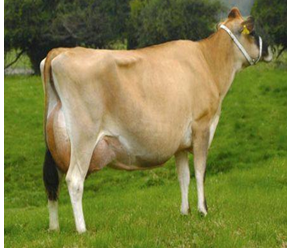Why?
How?
Sources of getting finance:
Breeds of cattle:
Indigenous:
Cross breed Cattle :
The crossbreeds are having exotic inheritance from Jersey, Brown Swiss or Holstein Friesian or a combination of these different breeds. Jersey breed is known for the milk fat percent and Holstein for the high quantity of milk.
Sources of cattle:
Breeds of Dairy Cattle
Indigenous Cows
Sahiwal

Red Sindhi

Gir
Exotic Breeds of Dairy Cow
Jersey

Holstein Friesian

Cross-breed cattle
The crossbreeds are having exotic inheritance from Jersey, Brown Swiss or Holstein Friesian or a combination of these different breeds. Jersey breed is known for the milk fat percent and Holstein for the high quantity of milk.
Cattle farm management
An efficient management of cattle will be incomplete without a well planned and adequate housing of cattle. Improper planning of animal housing leads to additional labour charges. The housing should have proper sanitation, durability, arrangements for the production of clean milk under convenient and economic conditions.
Cattle disease prevention and health management:
Cattle are susceptible to a wide variety of infectious diseases.Susceptibility has increased with the introduction of exotic germplasm and climate changes.The important infectious diseases of the cattle and its control are:
| Vaccine | Age | Dose | Booster | Interval | Season |
|---|---|---|---|---|---|
| FMD | 6-8 Weeks | 10 ml s/c | 6,9 or 12 months | Annual | Preferably November, December |
Black Quarter : Black Quarter is one of the deadly bacterial diseases of cattle. The disease spreads rapidly after heavy rainfall by contamination of soil with spores of the organism. Areas where previous death occurs from clostridium infection, have a higher incidence or risk of disease because of increased environmental contamination. Treatment of the disease with specific antibiotic is useful if the diagnosis of the disease can be made at the early stage.The disease can be controlled by regular vaccination.
| Vaccine | Age | Dose | Booster | Interval | Season |
|---|---|---|---|---|---|
| Polyvalent B.Q. Vaccine | All age | 5 ml s/c | 6 months | Annual | Before onset of monsoon, all season in endemic areas |
Haemorrhagic septicaemia : Haemorrhagic septicaemia, as the name implies is a poisoning of the blood accompanied by internal haemorrhages, is an acute septicaemic disease caused by a bacterium, Pasteurella multocida. The incidence of H.S. is throughout the year. The outbreak is not only in the period of high humidity or monsoon but also in winter season Although antibiotics are available for the treatment, there may not be any time for treament in most cases.The disease may be controlled by regular vaccination.
| Vaccine | Age | Dose | Booster | Interval | Season |
|---|---|---|---|---|---|
| H.S. adjuvant vaccine | All ages | 3ml i/m | 6 months | Annual | Preferably May, June |
Brucellosis: Brucellosis is one of the major zoonotic diseases and causes great economic losses due to loss of milk production, abortion at late pregnancy and high rate of infertility in females and varying degree of sterility in males. There is no seasonal variation for occurrence of the disease. Regular screening of serum samples for detection of the disease is required. Incidence of brucellosis can be reduced by elimination of infected bull, isolation and treatment of positive reactors and calfhood vaccination.Treatment for brucellosis in animals is neither advisable nor practicable.
Clean milk production:
Milk containing dirt, dust, foreign materials high bacterial count and with off, flavour is called contaminated milk. production of cleaan milk can be obtained by the following ways:
Daily Routines : Coolers, either the corrugated surface or the turbine in-can, can best be cleaned and disinfected manually and stored in the dairy to drain. Refrigerated bulk milk tanks can be cleaned either manually using cold or warm detergent/disinfectant solutions, or for the larger tanks, by automatic, programmed equipment. In either case, a cold water chlorinated (50 ppm) rinse proceeds and follows the washing solution. Foremilk cups can be a potent source of bacterial contamination and need to be cleaned and disinfected after each milking. They should then be stored in the dairy to drain. It is important with any method of cleaning that the equipment is drained as soon as possible after washing for storage between milking. Bacteria will not multiply in dry conditions but water lodged in milking equipment will, in suitable temperatures, provide conditions for massive bacterial multiplication. Equipment with poor milk contact surfaces, crevices and large number of joints, remaining wet between milking in ambient temperatures above 20°C, should receive a disinfectant rinse (50 ppm available chlorine) before milking begins.
Need for formation of dairy cooperative societies:
Farm records/documentation and accounts keeping:
| Title | Size | Detail |
|---|---|---|
| Composition and chemical testing of milk._For Assam Officers_Nov 2012.pptx | 1.28 MB | |
| Assamese Handout..pdf | 1.44 MB | |
| Assamese Manuals-.pdf | 3.04 MB |
